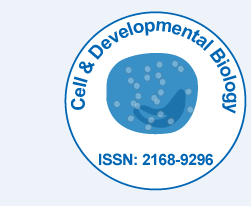
Biologie cellulaire et du développement
Libre accès
ISSN: 2168-9296

ISSN: 2168-9296
Anoop Kumar
Diabetes mellitus (DM) is a metabolic disorder. Since 1552, the earliest record of a person with DM, many treatment advances have been made. Sodium-glucose cotransporter 2 (SGLT2) inhibitors are one of the newest antidiabetic pharmaceuticals on the market. The SGLT2 inhibitor drugs include canagliflozin, dapagliflozin, empagliflozin, ipragliflozin, and tofogliflozin; however, only canagliflozin, dapagliflozin, and empagliflozin have been approved by the US Food and Drug Administration (FDA). These pharmaceuticals promote glycosuria via the kidneys and enhance sugar excretion from the body. Along with lifestyle changes and self-care measures, such as healthful eating and increased physical activity, SGLT2 inhibitor pharmaceuticals provide antidiabetic efficacy by facilitating normoglycemia and minimizing vascular pathology.
Diabetes mellitus is a difficult disease to treat due to the relative paucity of therapeutic options other than injectable insulin. The latter, however, can induce hypoglycemia, which has been linked to enhanced cardiovascular risk. Sodium glucose cotransporter 2 (SGLT2) inhibitors are a new class of oral anti-hyperglycemic medications that do not increase the hypoglycemia risk and are US Food and Drug Administration (FDA) approved in type 2 diabetes mellitus. SGLT2 inhibitors may also be of benefit in type 1 diabetic patients, in addition to insulin, although they have not yet been approved for this indication. By blocking SGLT2 in the early proximal tubules of the kidney, these drugs decrease renal glucose retention, which is enhanced in hyperglycemia, thereby improving blood glucose control, in type 1 and type 2 diabetic patents. Their low hypoglycemia risk is due to the compensating reabsorption capacity of another glucose transporter, SGLT1, in the downstream late proximal tubule and the body's metabolic counter-regulation, which remains intact during SGLT2 inhibition. When insulin dosage is lowered too much, SGLT2 inhibitors can enhance ketogenesis to the extent that the risk of diabetic ketoacidosis increases, particularly in type 1 diabetic patients. SGLT2 inhibitors improve the renal and cardiovascular outcome in type 2 diabetic patients. The mechanisms likely include a reduction in glomerular hyperfiltration, blood pressure, volume overload, and body weight, as well as lowering blood glucose without increasing the hypoglycemia risk. The same mechanistic effects are induced in type 1 diabetic patients. More studies are needed with SGLT2 inhibitors in type 1 diabetic patients, including renal and cardiovascular clinical outcome trials, to fully evaluate their therapeutic potential in this specific population.
Although SGLT2 inhibitor pharmaceuticals are newly introduced into the market, their discovery dates to 1835.3 Phlorizin, a nonselective SGLT inhibitor, was first isolated by French chemists from the bark of an apple tree.4 Phlorizin inhibits SGLT1 mostly in small intestinal cells, and SGLT2 similarly affects the kidney.4 Renal SGLT2 is the primary therapeutic target. Canagliflozin was the first pharmaceutical SGLT2 inhibitor approved by the FDA in 2013. Dapagliflozin’s FDA approval followed in 2013 and empagliflozin in 2014.
Mechanism of Action:
In healthy individuals, tubular glucose is absorbed, resulting in no urinary glucose excretion. Sodium-glucose co-transporters 1 and 2 contribute to the renal absorption of glucose. A SGLT2 is responsible for 90% of the glucose reuptake in the segment 1 of the proximal tubule, while SGLT 1 is accountable for the remaining 10%.3 Unlike other antidiabetic medications, which act by increasing insulin secretion or improving insulin sensitivity for the receptors, SGLT2 inhibitor drugs prevent the reuptake of glucose into the bloodstream. This selective action spares the inhibition of SGLT1 present in other tissues, avoiding gastrointestinal effects.
.
Recently, Food and Drug Administration (FDA) has approved sodium/glucose co-transporter 2 (SGLT2) inhibitors for the treatment of diabetes mellitus. However, regarding adverse drug reactions (ADRs) of SGLT2 inhibitors in large group of population, very less information is available. Thus, we have tried to find out the risk & benefit profile of SGLT 2 inhibitors. A total of 1,042 studies have been published from Nov. 2012-Nov.2017 regarding SGLT2 inhibitors. After inclusion and exclusion criteria, 27 studies have been selected for risk and benefit analysis. The results of the current study have shown the various therapeutic benefits of SGLT2 inhibitors. However, emerging evidence indicate various adverse drug reactions such as foot and toe amputation, cancer, diabetic ketoacidosis, bone fracture risk and urinary as well as mycotic genital infection. The causality assessment has shown a correlation between SGLT2 inhibitors and diabetic ketoacidosis and urinary tract infection.
Conclusion
Since the FDA approval of SGLT2 inhibitor medications, their usage has increased. The American Diabetes Association first recommends nonpharmacologic approaches, such as diet modification, exercise, and weight loss for patients diagnosed with DM, followed by a medicinal intervention with metformin if required. Sodium-glucose cotransporter 2 inhibitors are suggested as an additional medication in dual or triple pharmacotherapies when metformin alone fails to achieve normoglycemia. Prior to starting a patient on SGLT2 inhibitor medication, clinicians should monitor hydration adequacy, check bone density, review the patient’s cardiac profile, and assess hepatic and renal function. Prescribing SGLT2 inhibitors should be restricted if the patient has a history of type 1 DM, ketosisprone T2DM, and in those with a glomerular filtration rate of < 60 mL/min. Considering the preexisting medical conditions of the patient and monitoring the blood glucose levels, renal function, and volume status at every visit should minimize risks and enhance the benefits of prescribing this new medication class.